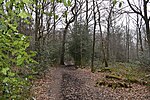Nabisco Shredded Wheat Factory

The Nabisco Shredded Wheat Factory is a disused factory which formerly produced variants of the shredded wheat breakfast cereal in Welwyn Garden City, in the United Kingdom. It was designed by architect Louis de Soissons to encourage companies to establish factories in the industrial areas of garden cities. The design of the Welwyn Garden City factory was inspired by an existing one in Niagara Falls, USA, also operated by the Shredded Wheat Company of America. Two buildings were operational at the time of its opening: a southern grain silo complex of 18 silos, and a western three–storey production area. Further expansions to the factory took place in the 1930s and 1950s with the construction of 27 additional silos, a new production area, and office space. The factory is considered a local landmark, with its image used heavily in marketing for Shredded Wheat to portray the cereal as healthier and more hygienic than alternatives. Some buildings on the site were granted Grade II heritage status by the Department of the Environment on 16 January 1981. Since closing in 2008, there have been proposals to redevelop the factory as a brownfield site for residential and commercial purposes. Parts of the factory have been demolished in preparation for anticipated construction work, including the newer 1930s silos.
Excerpt from the Wikipedia article Nabisco Shredded Wheat Factory (License: CC BY-SA 3.0, Authors, Images).Nabisco Shredded Wheat Factory
Bridge Road, Welwyn Hatfield Peartree
Geographical coordinates (GPS) Address Nearby Places Show on map
Geographical coordinates (GPS)
| Latitude | Longitude |
|---|---|
| N 51.801666666667 ° | E -0.20083333333333 ° |
Address
Bridge Road
Bridge Road
AL7 1GF Welwyn Hatfield, Peartree
England, United Kingdom
Open on Google Maps








